Elusive Planet Mercury As Seen Through The Eyes Of Ancient Astronomers
Ellen Lloyd - AncientPages.com - In ancient times the elusive planet Mercury was known under a variety of different names such as Nabu, Thoth, Hermes, Apollo, Buddha and more.
Mercury is the closest planet to the Sun. This hot planet that can reach 840 degrees Fahrenheit (450 degrees Celsius) and it was studied by many ancient astronomers who observed it regulary. It is believed that Mercury was known since at least Sumerian times roughly 5,000 years ago, where it was often associated with Nabu, the god of writing.
Sumerians and Babylonians named Mercury after the god of writing - Nabu
The inhabitants of Mesopotamia from about 3500 B.C. to about 2000 B.C. are referred to as Sumerians.
This civilization developed a written language using signs for words and syllables; their writing is preserved on clay tablets. They are thought to have studied the movements of the Sun, the Moon and the visible planets, although no written records of such observations from this early period remain. In this, as in many other early cultures, the motions of celestial objects were
of great interest because of their religious significance, and particularly because they were thought to give clues about the future course of human events. We now call this belief astrology and distinguish it from astronomy, the scientific study of the heavens.
The Sumerians named the Sun, the Moon and the visible planets - including Mercury - after their greatest seven gods. Translations from surviving cuneiform tablets reveal that Mercury was designated by many names, including that transcribed by archaeologists as MulUDU.IDIM.GU.UD. Mercury was often associated with Nabu, or Ninurta, the god of water and writing. Later, in Akkadian, it became known as Shikhtu, meaning “jumpy”.
The Sumerian civilization was succeeded by the Babylonians, a culture that inherited writing, astronomy, and mathematics from the Sumerians. Early Babylonian astronomers (2000 – 1000 B.C.) may have recorded their observations of the sky: Although no records from that period have survived, tablets from the 7th century B.C. refer to observations of Venus supposedly made much earlier, during the reign of King Ammisaduqa (1702 – 1682 B.C.).
We also know that from 800 B.C. onward the Babylonians cataloged stars, kept records of records of solar eclipses and the time intervals between new moons, and were able to predict some astronomical phenomena.
The Babylonians named Mercury after their divinity Nebo or Nabu, - the record keeper, god of writing, and messenger to the gods. As Mount Sinai in Egypt is named for the Babylonian moon god Sin, Mount Nebo, in present-day Jordan, is named after the Babylonian god of the planet Mercury. In Babylonian astronomy Mercury was associated with both sexes because of its appearance as both an evening and a morning star.
Later Babylonian civilizations (600 B.C. – 200 AD) were yet more advanced in mathematics and astronomy. Their catalog of the stars forms the basis of our zodiac. They also made detailed observations of the movements of the five visible planets, including Mercury.
Mercury was called “Buddha” in ancient India
Astronomers in ancient India believed that the location of the planets in the sky at the time of birth determined a person’s future. The Hindus called the planets collectively “navagrahs” and references to them can be found on temple markings.
As in other early cultures, the planets were given the names of divinities; Mercury was called Budha.
Ancient Chinese called Mercury Chen Xing
In ancient China, Mercury was known as Chen Xing, the Hour Star. It was associated with the direction north and the phase of water in the Wu Xing. Modern Chinese, Korean, Japanese and Vietnamese cultures refer to the planet literally as the "water star", based on the Five elements.
Ancient Egyptians called Mercury - Thoth, the great measurer
Ancient Egyptians were fascinated with the study of the night sky, planets, stars and other celestial bodies.
In ancient Greece Mercury was known under two different names – Apollo and Hermes
Early Greek civilization, from 1400 to 200 BC, made many contributions to astronomy. Unlike other early astronomers who were astrologers as well, Greek astronomers were often considered philosophers and mathematicians, as we know from the works of those such as Plato and Eudoxus.
Around 450 B.C. the Greeks started studying the motions of the planets and using geometry to measure the size of the Earth, Sun and Moon.
See also:
Astronomically Aligned Temples And Pyramids Of Ancient World
Sunduki – “Home Of The Gods” – One Of The World’s Oldest Astronomical Observatories
Mercury was known by two different names, associated with its evening and morning appearances. These were Apollo (god of truth, the arts, archery, plagues, and divination) and Hermes (god of writing and messenger to the other gods). Plato and Eudoxus reported that the synodic and sidereal periods of Mercury were 110 days and 1 year respectively. Later Greek astronomers made detailed star charts and determined planetary motions, often building on earlier work. In 200 AD the Greek astronomer Ptolemy completed his Almagest, a comprehensive text of mathematical astronomy. Translated into Latin around 1400 AD, Ptolemy’s work was considered by Europeans to be the authority on astronomical understanding until the early 1600’s. Ptolemy’s model of the solar system was geocentric, or Earth-centered.
The Sun and planets were thought to travel around the Earth from east to west, with the planets moving on more complicated cyclic paths about their average positions.
The Mayas believed Mercury was just as important as the Sun
Mayan astronomers were primarily interested in the “Zenial Passages” – times when the Sun crossed over certain Mayan latitudes. Mayan astronomy is thought to have developed in the period from 1500 BC to 800 BC. Much of what we know of it is found in writing known as the Dresden Codex, a band of paper 3.5 meters long arranged in 39 sheets. This contains information regarding the calendar system, astronomical data and sky mechanics, as well as tables of multiple integers thought to have been used in the calculations of planetary movements.
The Mayas were also deeply interested in the planet Venus, believing it to be as important as the Sun. But the Mayas charted the motion of the planet Mercury as well; records of their detailed observations are found in the Dresden Codex.
These include the appearance of Mercury as a morning star in 733 B.C. and as an evening star in 727. The Mayans also calculated that Mercury would rise and set in the same place in the sky every 2,200 days.
Written by - Ellen Lloyd – AncientPages.com
Copyright © AncientPages.com All rights reserved. This material may not be published, broadcast, rewritten or redistributed in whole or part without the express written permission of AncientPages.com
Expand for referencesMore From Ancient Pages
-
 4 Things Ancient Greeks And Romans Got Right About Mental Health
Featured Stories | Aug 30, 2024
4 Things Ancient Greeks And Romans Got Right About Mental Health
Featured Stories | Aug 30, 2024 -
 ‘Collata Quipu’ May Explain Messages Hidden In Mysterious Writing Of Inca
Archaeology | May 10, 2017
‘Collata Quipu’ May Explain Messages Hidden In Mysterious Writing Of Inca
Archaeology | May 10, 2017 -
 Puzzling Case Of An Ancient French Giant Whose Bones Caused Sensation And Controversy
Ancient Mysteries | Jan 22, 2019
Puzzling Case Of An Ancient French Giant Whose Bones Caused Sensation And Controversy
Ancient Mysteries | Jan 22, 2019 -
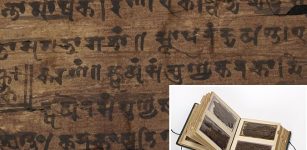 Ancient Indian Text Re-Writes History Of Number Zero And Mathematics
Archaeology | Sep 15, 2017
Ancient Indian Text Re-Writes History Of Number Zero And Mathematics
Archaeology | Sep 15, 2017 -
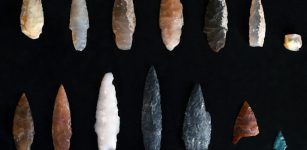 Oldest Known Projectile Points In The Americas Discovered In Idaho
Archaeology | Dec 23, 2022
Oldest Known Projectile Points In The Americas Discovered In Idaho
Archaeology | Dec 23, 2022 -
 Ancient Script Reveals Mysterious Location Of Legendary Hanging Garden Of Babylon
Featured Stories | Apr 4, 2014
Ancient Script Reveals Mysterious Location Of Legendary Hanging Garden Of Babylon
Featured Stories | Apr 4, 2014 -
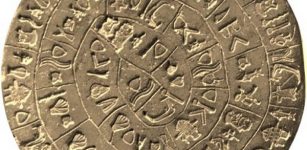 Controversial Artifact: What Kind Of Message Does The Phaistos Disk Contain?
Artifacts | May 13, 2014
Controversial Artifact: What Kind Of Message Does The Phaistos Disk Contain?
Artifacts | May 13, 2014 -
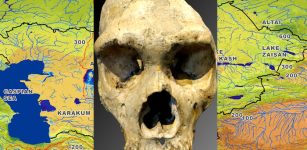 Central Asia Identified As A Key Region For Human Ancestors
Archaeology | Oct 22, 2022
Central Asia Identified As A Key Region For Human Ancestors
Archaeology | Oct 22, 2022 -
 Oldest Giant Dinosaur Species Discovered In Argentina
Archaeology | Jul 10, 2018
Oldest Giant Dinosaur Species Discovered In Argentina
Archaeology | Jul 10, 2018 -
 Secrets Of The Freemasons – Masonic Symbols Reveal Worship Of Ancient Mother Goddesses
Ancient Mysteries | Jun 18, 2018
Secrets Of The Freemasons – Masonic Symbols Reveal Worship Of Ancient Mother Goddesses
Ancient Mysteries | Jun 18, 2018 -
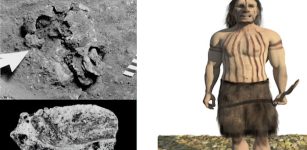 Re-Discovered Ancient Ksâr ‘Akil Fossils Shed New Light On Human Evolution
Archaeology | Mar 28, 2023
Re-Discovered Ancient Ksâr ‘Akil Fossils Shed New Light On Human Evolution
Archaeology | Mar 28, 2023 -
 Ten Ancient Jugs And Shiloh May Reveal The Location Of The Biblical Tabernacle
Artifacts | Feb 6, 2019
Ten Ancient Jugs And Shiloh May Reveal The Location Of The Biblical Tabernacle
Artifacts | Feb 6, 2019 -
 Yasuke – The First Black Samurai Caused A Sensation In Japan
Featured Stories | Oct 25, 2019
Yasuke – The First Black Samurai Caused A Sensation In Japan
Featured Stories | Oct 25, 2019 -
 Mysterious Rock Inscription Found In Brittany Baffles Experts – Reward If You Can Decipher It
Archaeology | May 15, 2019
Mysterious Rock Inscription Found In Brittany Baffles Experts – Reward If You Can Decipher It
Archaeology | May 15, 2019 -
 Viking Children Were Buried With Extremely Sharp Knives – Afterlife Tools To Be Used In Valhalla?
Ancient History Facts | Nov 29, 2017
Viking Children Were Buried With Extremely Sharp Knives – Afterlife Tools To Be Used In Valhalla?
Ancient History Facts | Nov 29, 2017 -
 Enigmatic Ale’s Stones – Sweden’s Megalithic Ship-Like Formation
Featured Stories | Jan 17, 2023
Enigmatic Ale’s Stones – Sweden’s Megalithic Ship-Like Formation
Featured Stories | Jan 17, 2023 -
 Solstices Brought Mayan Communities Together, Using Monuments Shaped By Science And Religion – And Kingly Ambitions, Too
Featured Stories | Jul 6, 2024
Solstices Brought Mayan Communities Together, Using Monuments Shaped By Science And Religion – And Kingly Ambitions, Too
Featured Stories | Jul 6, 2024 -
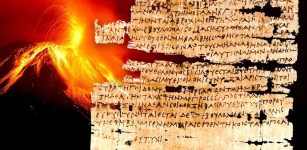 Pharaohs In Trouble: Climate Change And Natural Disasters Led To Political Uprisings In Ancient Egypt
Archaeology | Oct 17, 2017
Pharaohs In Trouble: Climate Change And Natural Disasters Led To Political Uprisings In Ancient Egypt
Archaeology | Oct 17, 2017 -
 Incredible Cave With Secret ‘Door’ Discovered In The American West – Fascinating Underground Mystery
Featured Stories | Nov 19, 2024
Incredible Cave With Secret ‘Door’ Discovered In The American West – Fascinating Underground Mystery
Featured Stories | Nov 19, 2024 -
 London’s Underground Rivers Were Deliberately Hidden
Featured Stories | Oct 8, 2018
London’s Underground Rivers Were Deliberately Hidden
Featured Stories | Oct 8, 2018



